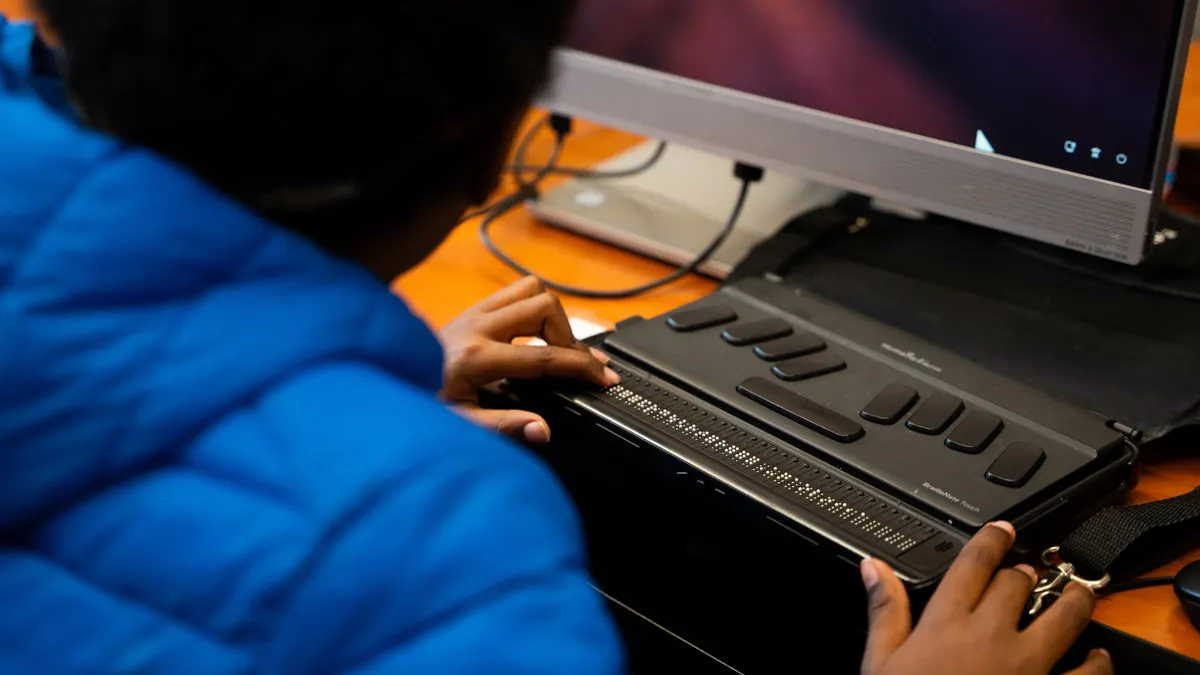In his budget proposal for fiscal year 2017, President Barack Obama requested $4 billion to boost computer science literacy in U.S. elementary and secondary schools.
The “Computer Science for All” initiative is meant to bring skills like coding into classrooms ranging from kindergarten through 12th grade, and to inspire young Americans to be creators instead of consumers in the “digital economy.”
“States and districts could use these funds to provide access to CS [computer science] courses to every high school student within five years, create a progression of CS learning experiences in elementary and middle schools, and ensure additional support and resources for students traditionally underrepresented in STEM fields,” the White House said in a fact sheet.
Specifically, the initiative allocates $4 billion in mandatory funding for states that is stretched across three years. It also earmarks $100 million for school districts to expand computer science programs by providing more resources for training teachers, expanding access to high-quality instructional materials, and building regional partnerships.
It also calls for $135 million in computer science-specific funding to be drawn from the National Science Foundation and the Corporation for National and Community Service.
According to the White House, by 2018, 51% of all STEM jobs are projected to be in computer science-related fields.
Adam Enbar is a cofounder of The Flatiron School, a coding academy based in New York City. One of the school’s informal mantras, he says, is "It's easier to teach a teacher how to code, than it is to teach a coder how to teach."
Flatiron has already taught hundreds of K-12 teachers to code, evolving its technique over time.
At first, the school taught a student population that was mostly made up of college graduates in a more sweeping, lecture-style format on location in NYC, subsequently preparing them for local jobs related to computer science.
“Since then, we've invested tremendously in technology and curriculum through our platform learn.co in order to build outcome-oriented education to more people,” Enbar said. “We now have online students around the world and have created programs like the Mobile Dev Corps in partnership with NYC to bring training to more diverse populations.”
When thinking about the incorporation of more computer science in K-12 education, Enbar says it’s important to focus on a singular question: Why?
To him, two answers exist. First, coding should be taught because it promotes critical thinking skills. Second, it's proven to open doors to various employment opportunities.
Enbar thinks the new allocation of federal funding would be best used to strengthen instruction for educators themselves around computer science.
“There are a lot of bottlenecks to introducing CS in classrooms, but with talented teachers being trained in the material, it will all get done,” he said. “Without great teachers, everything else is a waste.”
For the past year, Flatiron has been “training teachers in earnest,” Enbar says. The Flatiron School's training includes a Computer Science Teaching Fellowship program that gives free training to educators.
Ruth Mesfun, a former Teach for America participant, is one of them. As a Computer Science Educator Fellow, she learned how to program and how to teach programming skills, and then worked in one of Flatiron’s classrooms.
“I wanted to learn at first so I could teach my students how to code,” Mesfun said, “but now I love how much power you have to create and build meaningful tools.”
To her, the Computer Science Educator Fellowship provided a comprehensive outlook on programming.
As a fellow, she says she completed "pre-work" and then moved on to a two-week intensive training before student teaching over the course of a summer.
“Computer Science is important for K-12 learners because it demystifies programming as 'magic,’” Mesfun said. “[It] empowers them to not only learn how to create, but use that knowledge to help others.”
She's now enrolled in an online learning program through Flatiron, where she's gaining more detailed lessons on specific programming languages like Ruby, OOP, and SQL. And she's doing that all while teaching sixth grade computer science full-time at Excellence Girls Middle Academy, a charter that's part of the Uncommon School network in New York. Mesfun makes sure her students understand that coding is about more than just computers.
“We create games or apps that solve a problem in the community,” she explained. “It shows them that coding is fun, but that we need to always think about how it can impact others and be purposeful.”
When it comes to educating teachers about coding, however, a plethora of challenges exist. They're largely related to the addition of an entirely new subject to the curriculum without existing teachers, tests, content, or standards.
“All that said, if teachers are given the time, training, and freedom they need, we'll overcome all of those challenges," Enbar said.
To Enbar, when it comes to coding in the classroom, the most important thing to keep in mind are core goals.
“We're not trying to create a nation of software engineers,” he continued. “We need to inspire kids to fall in love with technology. Given that, we need to give teachers the tools necessary to impart that knowledge, but also the freedom to inspire their students as they know how to do. We can't be rigid.”
Would you like to see more education news like this in your inbox on a daily basis? Subscribe to our Education Dive email newsletter! You may also want to read Education Dive's look at cost-benefif analysis in K-12 ed tech decisions.




 Dive Awards
Dive Awards














